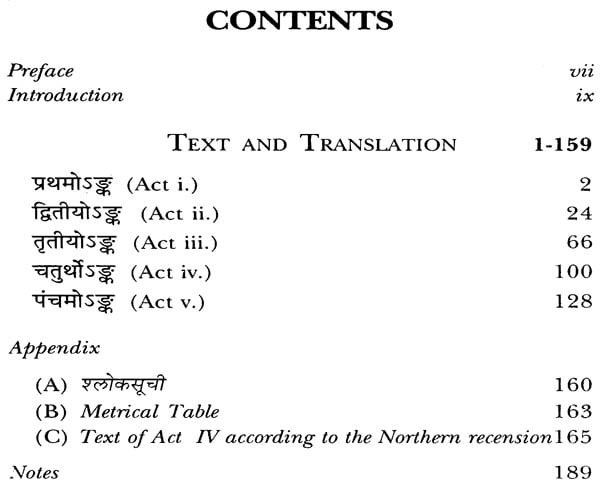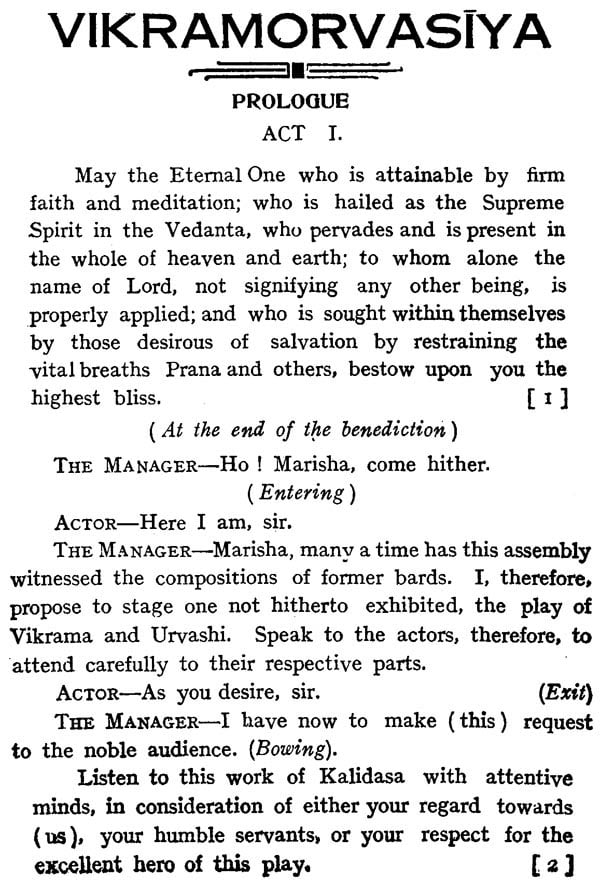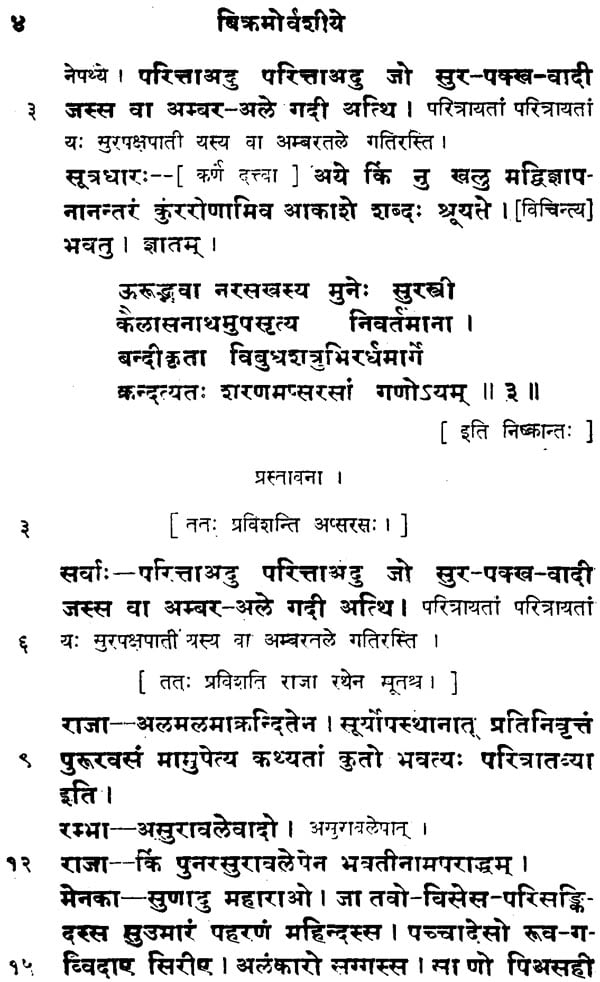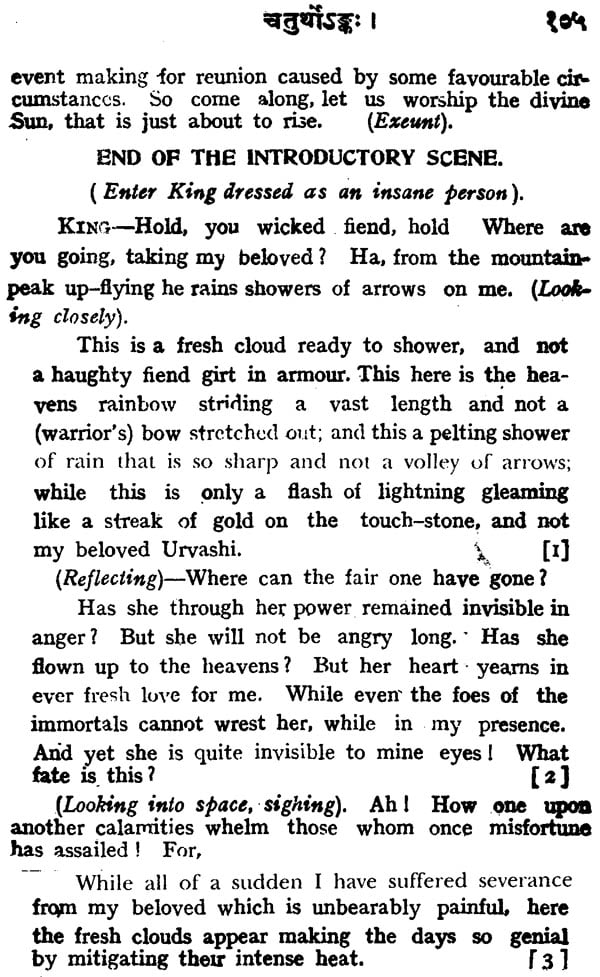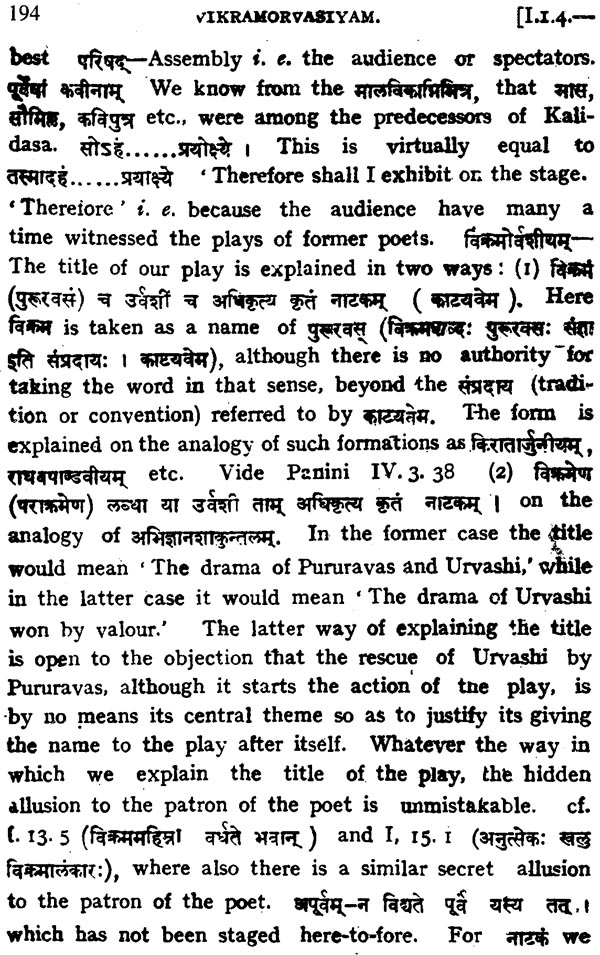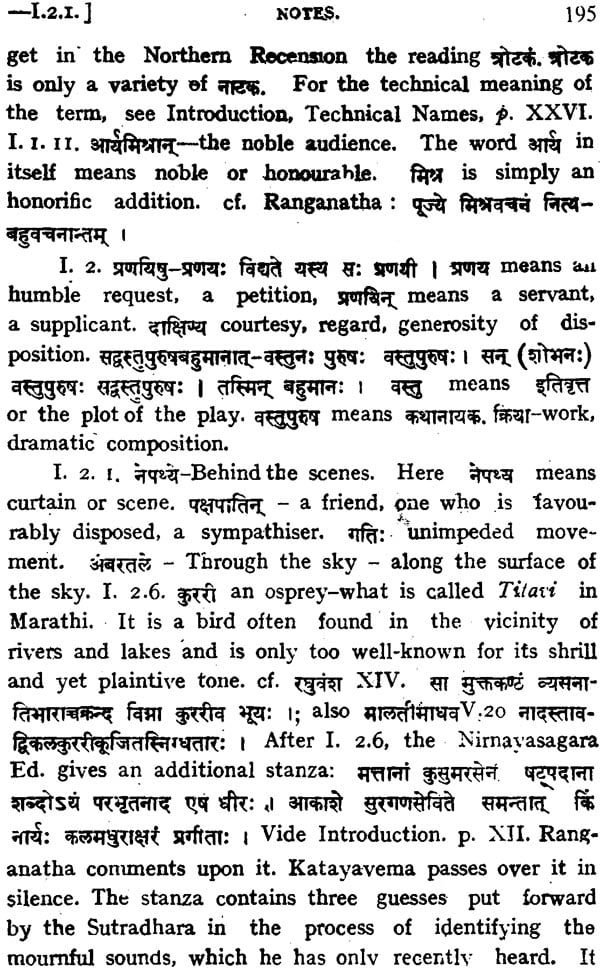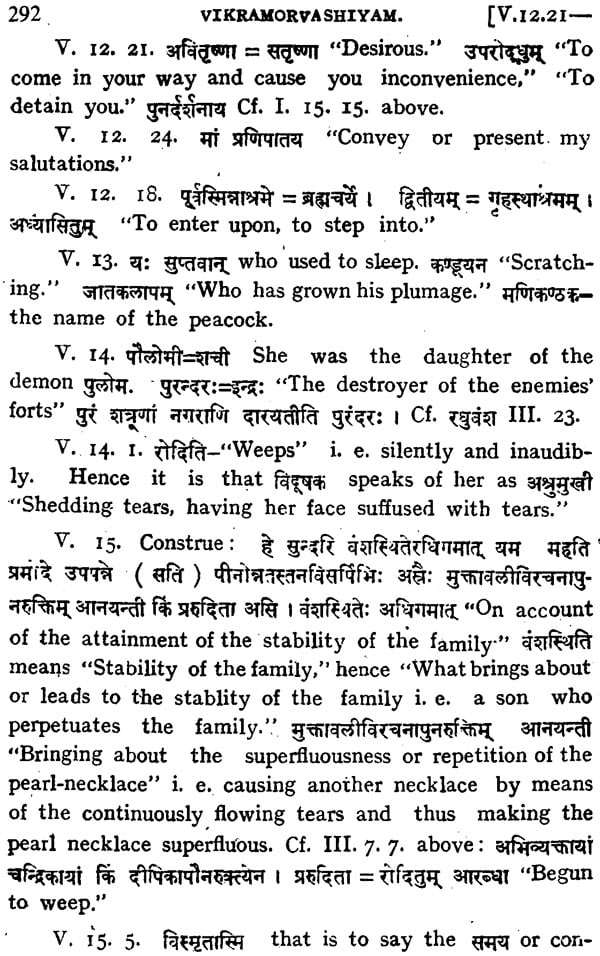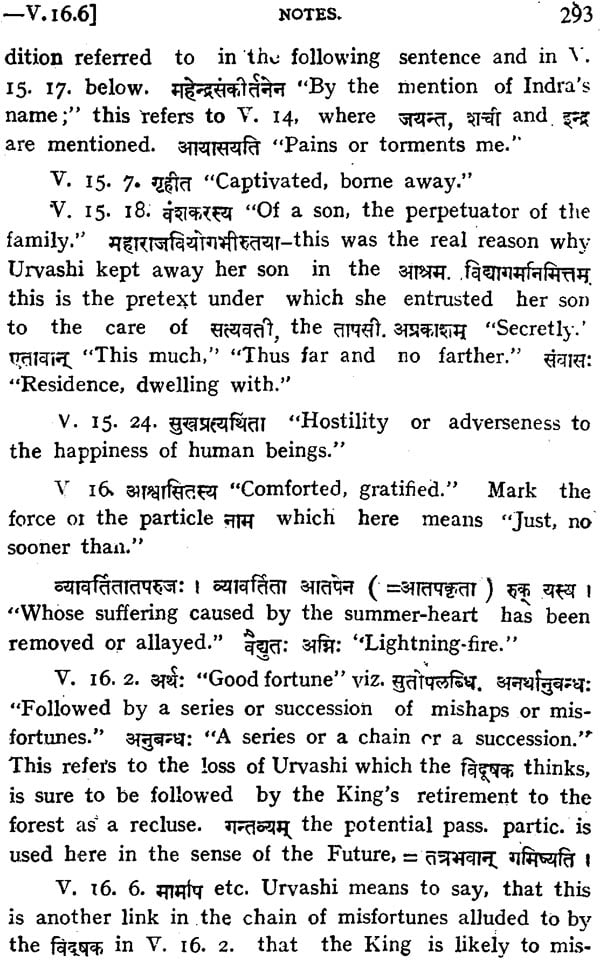
Vikramorvasiyam of Kalidasa
Book Specification
| Item Code: | NAT924 |
| Author: | C. R.Devadhar |
| Publisher: | Motilal Banarsidass Publishers Pvt. Ltd |
| Language: | ENGLISH |
| Edition: | 1966 |
| ISBN: | 9788120819221 |
| Pages: | 328 |
| Cover: | PAPERBACK |
| Other Details | 7.00 X 5.00 inch |
| Weight | 220 gm |
Book Description
The text of the present edition of the Vikramorvashiya is in the main the same as that of Mr. S. P. Pandit's with but a few variations of readings, obvious corrections and the substitution of a correct orthographic representation of Prakrit words. Of the two main recensions, we have followed the Southern recension, but the peculiarites of the Northern recension are not unrepresented; for while all additional stanzas to be found in the first three acts and the fifth are given in the introduction, the fourth act is given in full in an appendix with the additional Apabhramsha passages carefully collated from Pandit's and Pishel's texts.
There is a growing tendency among sanskrit Scholars to make a literal translation their main object, despite the fact that such a translation not only loses the spirit of the original, but degenerates into a word-for-word rendering into a language which no one who has a proper sense of English, will dare to name English. We give a typical instance in illustration.
By his feat, has been placed a foot on the head of his enemies etc." There is considerable truth in the dictum that " A translation to be literary, thought not to be too literal." Of course, in a book like this, high literary ambition,-creative effort-is out of question. And while care should be taken to keep as close to the original as possible, that does not warrant the kind of jargon, such as we have given above, which fails to convey either the meaning or the spirit of the original and offends most egregiously against a living language.
The notes are copious enough and give everything that is essential not only to a student reading for an Arts course but also to a general reader. The introduction deals exhaustively with all essential questions. We have drawn upon all available editions and other sources for information in the preparation of our work and we can-not but express our deep obligation to all these, but principally to the following among several authorities consulted:-
Wilson, Hindu Theatre, his free but graceful rendering is, in many places where it happens to be literal, followed; S. P. Pandit, the text is practically wholly derived from his edition; Sten Konow, Das Indische Drama; M. Winternifz, Geschichte der Indischen Litteratur, Band III; Pischel, Materialien Zur Kenntnis der Apabharamsa; Ryder, Shakuntala and other poems of Kalidasa.
It is with particular pleasure that we express our thank; to Prof. K. V. Abhyanakar M. A. of Gujarat College, Ahmedabad, at whose suggestion we ventured upon the publication of this edition of the play, and who has all along evinced such interest in our work. Our best thanks are due to Mr. R. P. Kothari, the manager of Messrs. C. M. Parikh & Co. for his readiness to under-take the publication on behalf of the firm and for the uniform courtesy and kindness he has shown us during its progress.
We regret we could not use diacritical marks, owing to the inability of the press to supply them, and therfore’s does duty for
Howsoever overlaid with fantasies or encrusted with a mass of isolated , events separated in time and place, a widely circulated literary tradition contains within it-self a germ of historical truth and can be set aside on pain of doing serious harm to that truth. Thus it is with king Vikramaditya of Ujjain, the liberal patron of learning and arts, of whom the great poet Kalidasa was contemporary. This tradition forms the starting point and the basis of the numerous theories regarding the 'age of Kalidasa. Of these two rival theories may here be stated as those deserving of consideration. According to one held by most European scholars, the Vikramaditya of the tradition is no other than the Gupta king Candragupta II who assumed the title of Vikramaditya and succeeded his father Samudragupta 375 A. D. and made Ujjain his capital. Vincent Smith in his early history of India ( P. 3o4, foot-note ) expresses the view that the earlier works of Kalidasa were composed before 413 A. D. during the regime of Candragupta and his later works were written under Kumaragupta I ( 413 A. D. to 455 A.D.) and that possibly his literary career extended even into the reign of Skandagupta (453 A. D. 48o A. D. ).
Some are inclined to suggest from the reference to the conquest of the Huns by Raghu in his Digvijaya, that Kalidasa must have lived after the victory of Skandagupta over the Huns half a century later than the date suggested. But the evidence has no probative value.
There is nothing to indicate any reference to reality in this account of the exploits of a king of long ago; and if Kalidasa had lived in the reign of Skandagupta when the fortune of the royal house was evidently tottering to a fall, it would be difficult to understand the calm contentment with the established order which marks all his works.
The other view held by many Indian scholars puts Kalidasa in the first century before our era, and makes him a contemporary and a protege of King Vikramaditya„ the founder of the Samvat Era-57 B. C. That there is nothing implausible in the assumption is clear when on the strong testimony of Mahabhashya it has been possible to put back the beginning of court. poetry in general by a few centuries of the Christian Era. And "Epigraphy no4 merely confirms the evidence of the Mahabhashya that artificial poetry originated before the commencement of our era, but shows that that poetry continued to be cultivated throughout the succeeding centuries." Already the lays of Kanishka j 78 A. D.) Ashvaghosha wrote his Buddhacarita in the artificial style and called it a Mahakavya.
**Contents and Sample Pages**
